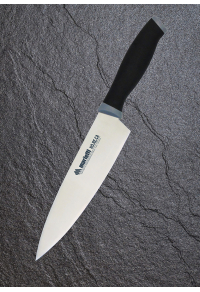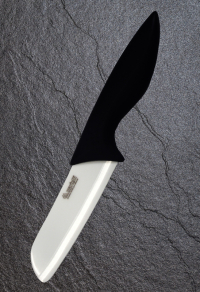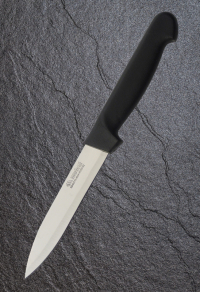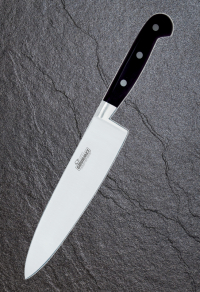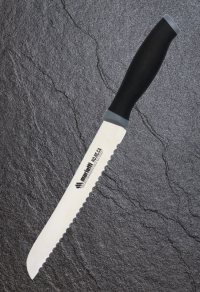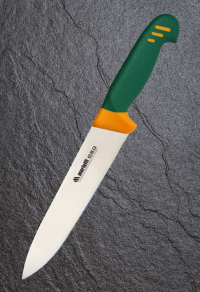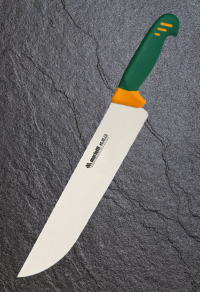
Knives
Subcategories
Active filters
-
copy of Knife CUCINA 1232TP
In the kitchen we often find ourselves working cuts of meat of different sizes and we need to separate the bones from the meat. DEBONING knives cater to this need: they can have a STRAIGHT or slightly CURVED blade to absorb the different types of cuts and shapes of the animals, making the preparation of the meat easier.
-
Knife SANTOKU - cod. 134CZ
The Santoku knife represents the Japanese equivalent of the European chef's knife (CHEF KNIFE). Characteristic Japanese knife used to cut and chop vegetables. For this operation - in fact - Western cooks use the knife called CHEF KNIFE The big difference between the two blades is that the carving knife is designed so that the tip always remains in contact with the cutting board, while the Santoku is used as a small cleaver and the tip always comes off the cutting board. -
Knife SPELUCCHINO - cod. 147A
It is a "joker" tool used by both the professional and the housewife. The particular shape of the blade allows processing even outside the cutting board. The PARING knife is an indispensable tool for everyday use. The basic requirements for this knife must be: easy handling, light weight and a very sharp blade. The blade must cut without having to apply pressure. Meat, poultry, fish and the remaining foods, represent for the paring knife, the knife of choice even if for the cleaning of fruit and vegetables it can find a correct use. -
Knife TRINCIANTE - cod. 2008
This model of knife allows the most varied workings and is certainly the tool that spends the most time in the hands of a Western chef. It has always been the knife with which everything is more or less everything on the cutting board. Excellent for shape and size for cutting, chopping, dicing and generally slicing any type of food: meat, fish, vegetables, fruit and semi-rigid or rigid cheeses. When choosing a carving knife, always check to have the space on the cutting board to be able to use it without damaging the tip near other objects and bearing in mind the fact that you will often have to use it as a guillotine, keeping the tip close to the cutting board and moving the initial part of the blade. A valid alternative - for the professional - to the classic domestic crescent. -
Knife PANE 1243TP
Slicing bread precisely and serving beautiful slices is a daily action. In addition, cakes, casseroles, roulades and other savory or cheesy preparations require a precise cut without having to pressurize the food, and this blade facilitates cutting.The tip is not needed and the blade must be wavy so as to incise the crust slowly without breaking it.
-
Knife CUCINA 20 KTC20
Together with the knife for vegetables it is probably the most used, as it can be used on a wide variety of foods and for a long series of operations. For example, it is able to chop, crumble, reduce into cubes and slice meat, fish and vegetables. -
Knife AFFETTARE 32 BTW32
Very important for slicing meats and hams and salmon if it has a blistered blade. They have a long (possibly hollow) and very flexible blade.















